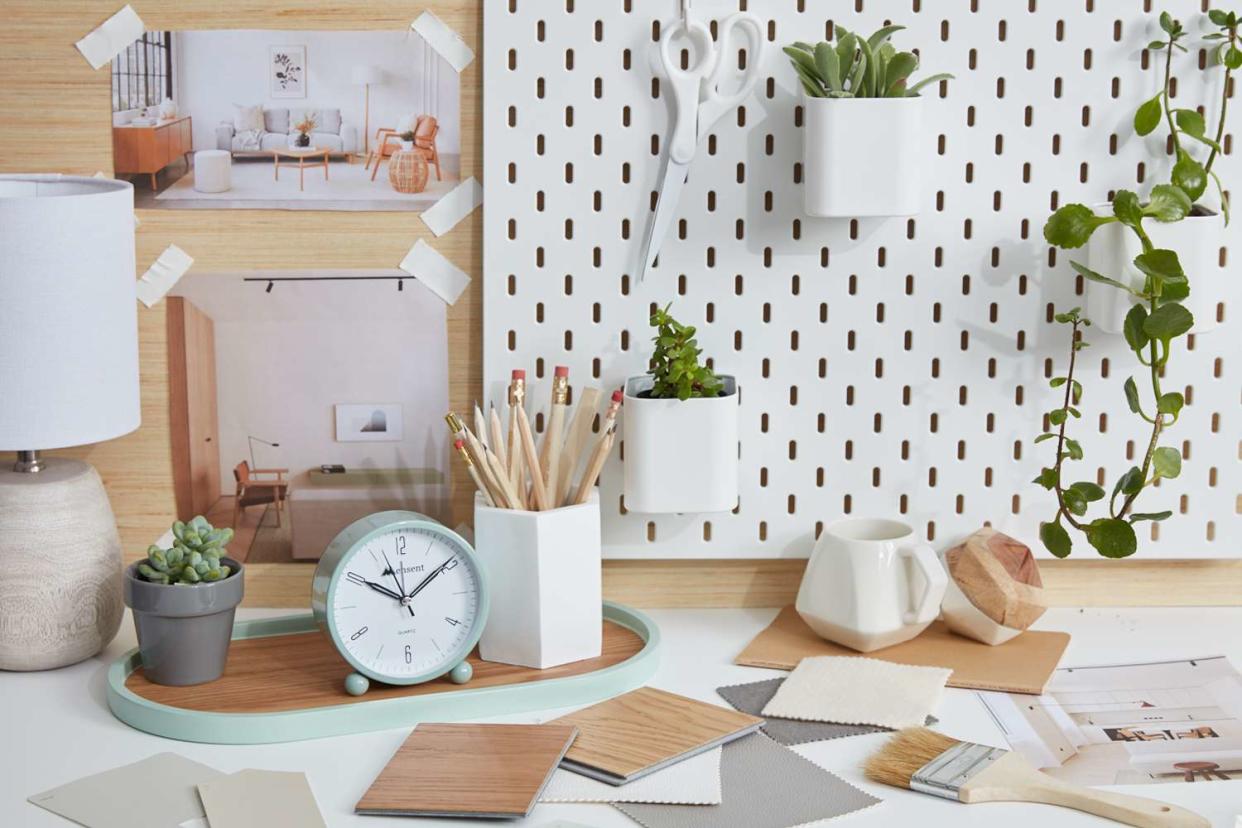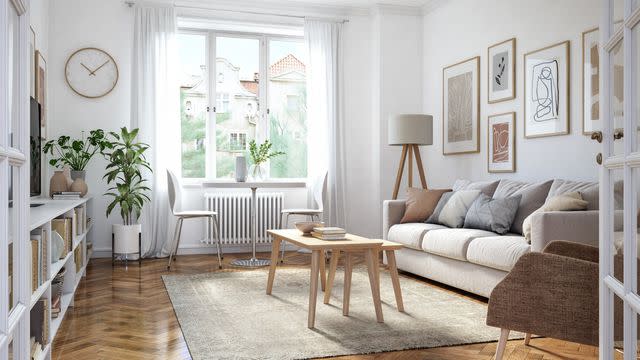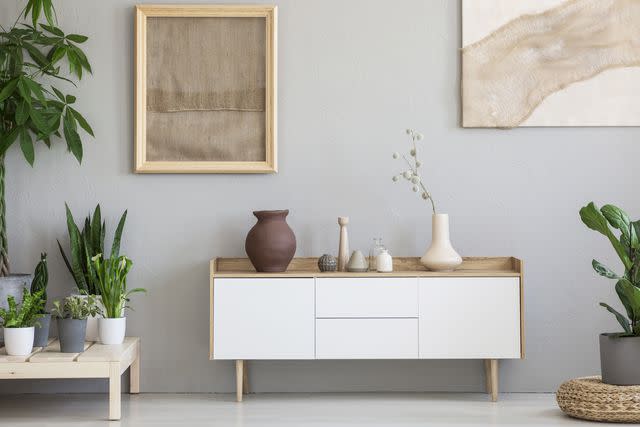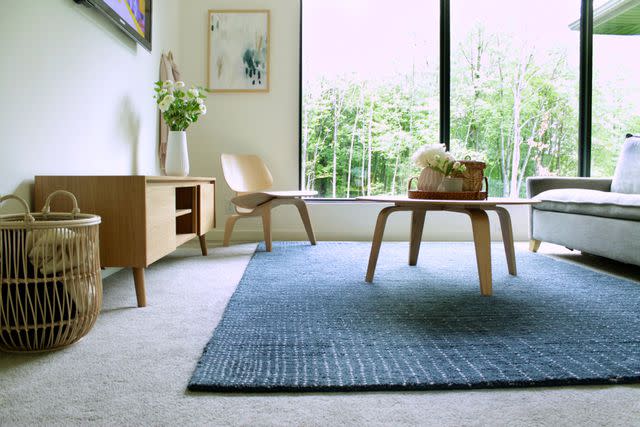What Is Scandinavian Style?

The Spruce / Margot Cavin
- Oops!Something went wrong.Please try again later.
- Oops!Something went wrong.Please try again later.
- Oops!Something went wrong.Please try again later.
- Oops!Something went wrong.Please try again later.
Fact checked by Sarah Scott
White walls, wood floors, modern furniture, and minimalist design are all hallmark traits of a Scandinavian aesthetic. More than just furniture you buy from IKEA, Scandinavian design originates from Nordic influences and incorporates the contributions of talented Scandinavian designers such as Alvar Aalto, Hans Wegner, Arne Jacobsen, Eero Aarnio, and Ingvar Kamprad.
What Is Scandinavian Style?
Scandinavian style is a decor movement that bridges the simplicity of minimalism and the neutral tones of modern style with functional design. It doesn't leave beauty for the sake of beauty behind, but, instead, weaves it into the practicality of each piece. It's both clean and cozy, bright and candlelit, particularly as it moves into the winter season and embracing hygge. It incorporates an organic feeling and natural elements and textures.
What is Hygge?
Hygge is the Danish concept of coziness and finding light in the midst of the long, dark winter. It's embracing a season of slowing down, being with loved ones, and discovering comfort and conviviality.
Scandinavian Countries
Scandinavia refers to the northern European countries of Norway, Sweden, Denmark, and Greenland. While not technically in Scandinavia, Finland and Iceland are often included as part of Scandinavian style due to their cultural and aesthetic similarities.
All of these countries have long, dark winters and stunning natural landscapes, which have informed their design. The clean lines and neutral color palettes connect to their environment, while the emphasis on coziness and comfort are necessary during the depths of winter.
Main Characteristics of Scandinavian Style
Scandinavian style is simple, clean, and cozy. It feels tied to nature through neutral colors and wood accents. It combines both function and beauty, verging on minimalism while embracing design decisions that primarily for aesthetic value.
Here are a few of the key characteristics you'll see throughout Scandinavian style:
Neutral colors: You'll find light and airy colors through Scandinavian spaces, with an emphasis on white, ivory, gray, tan, and light, warm shades.
Natural materials: Scandinavian design is grounded in wood, which is often a light, bright wood like ash, beech, or pine. Imagine warm, light wood contrasted with soft, neutral fabrics.
Light: In Scandinavia, they light the natural light flow in through unadorned windows during the day, then embrace the warm glow of candles and lamps at night.
Minimalism: While Scandinavian design does include elements simply because they're beautiful, there is restraint in the design. A clean, clutter-free space is ideal.
Texture: Amidst all the neutral colors and natural woods, there are is a focus on organic, natural textures. From cozy knits to sheepskin and wool, these add both interest and literal warmth to a space.
Clean-lined furniture: Whether curvy or straight, Scandinavian furniture focuses on clean, functional lines without extra ornamentation.
History of Scandinavian Style
In the early 20th century, Modernism was sprouting up everywhere and, fearing a takeover of machines in all aspects of life, an impassioned plea emerged for a return to nature. On one side, the Art Nouveau movement emerged. Art Nouveau embraced the decorative arts of interior design, as well as fine arts and architecture. Its nature-inspired designs embraced organic, curving lines, intricate patterns, and rich, earthy colors.
By 1925, Art Nouveau gave way to the gilded, visually-dazzling designs of Art Deco, which held strong until the austerity of the Great Depression set in.
Following World War II, new social ideas were sweeping through Europe and, in design, they reversed older conventions around beauty and status. Beauty, which had once been reserved for the wealthy, and functionality—required by all—were combined, and those products were made available to everyone. At the same time, the years following World War II saw the nations of Scandinavia banding together. This was particularly evident in the realm of design—through a series of conferences in Scandinavian cities during the 1940s, a design movement was forming.
This new approach to design was a combination of beauty, simplicity, and functionality, and it began to take shape as a recognizable design force in the 1950s. The midcentury modern style was heavily influenced by the appearance of Scandinavian design, and most furniture arrangements were uncluttered and simple, giving the entire space a cozy, content feeling described as hygge in Danish.
One of the first major steps for widespread recognition occurred with the establishment of the Lunning Prize, otherwise known as the "Nobel Prize" of Scandinavian design. The award was named for Frederik Lunning, a New York-based importer of Danish designs, and was awarded for the first time in 1951 and every year thereafter until 1970. Shortly after the institution of the prize, Scandinavian design gained a champion in Elizabeth Gordon - editor-in-chief of House Beautiful magazine, and Scandinavian decor and Scandinavian architecture became a household name in the United States.
Why Is Scandinavian Design Popular?
Humans naturally gravitate towards organic color palettes, soothing designs, and connections to nature, which is why Scandinavian design has continued to be popular for decades. It's now seen as a timeless design movement that is beloved by generations. Decorating in a Scandinavian style focuses on function, minimalism, and a lifestyle of simplicity gives people comfort and a sense of peace.
How to Design With Scandinavian Style at Home
Scandinavian Colors
You'll mostly see neutrals like white, ivory, tan, gray, and shades of light wood in Scandinavian style. However, when there are colors introduced, you may see light, muted earth tones, like rust or sage green.
Scandinavian Furniture
Scandinavian furniture is minimalist, with clean lines and light, airy silhouettes, Often, there's a contrast of smooth, sleek light hued wood with cozy white upholstery, creating a look that is beautifully clean and simple. There are simple lines, with little to no ornamentation.
Of course, you can't think about Scandinavian furniture without looking to IKEA. This iconic Swedish furniture brand started in 1953, and it brought Scandinavia's minimalist, simple lines to the masses at an affordable price point. It is still one of the most popular places to buy Scandinavian-inspired home decor today.
Additionally, the influence of Finnish designer Alvar Aalto's famous curved wood armchairs and Arne Jacobson's Egg, Drop, and Swan chairs continue to be felt to this day.
Scandinavian Decor
Scandinavian style centers around functionality, but creating functional pieces in a way that feels beautiful and cozy. They're not going to add lots of accessories and decor to style a home, yet a perfectly placed coffee table book, a vibrant green plant, or a sleek, sculptural vase can complete a room. The key is using minimal decorations placed strategically to liven up a simple space.




Read Next: 16 Swedish-Style Homes We Adore
Frequently Asked Questions
How do I get the Scandinavian look?
To get a Scandinavian look, focus on neutrals and clean lines. Try white walls to emphasize light, a neutral-heavy palette, natural textures such as wood and stone, a lack of window treatments and carpets, and simple, no-fuss layouts that emphasize an elegantly minimalist aesthetic.
Is Scandinavian style still popular?
Because of its simplicity and emphasis on nature and clean lines, Scandinavian style is perennial popular. It is one of the most timeless decor movements to come out of the 20th century.
Why is Scandinavian style minimalist?
Scandinavian style focuses on function because of the harsh climate of the countries in which it evolved. Their focus was survival during the winter and clinging to coziness and comfort through the long, dark months. Decor in a Scandinavian farmhouse that felt warm, bright, and simple was a practical refuge.
Read the original article on The Spruce.

